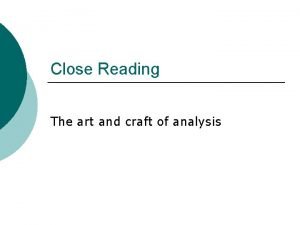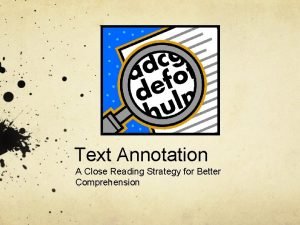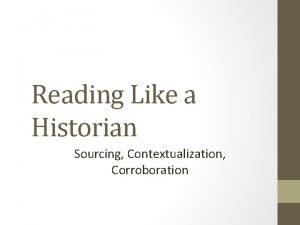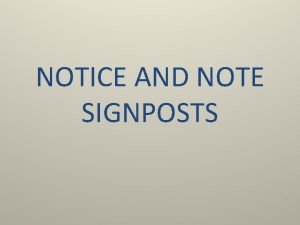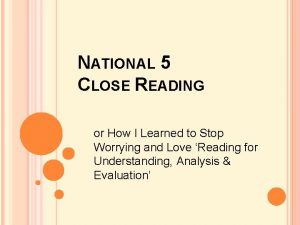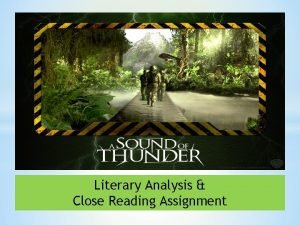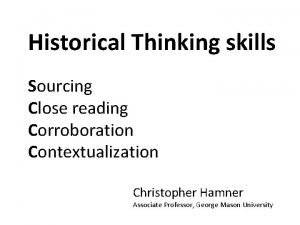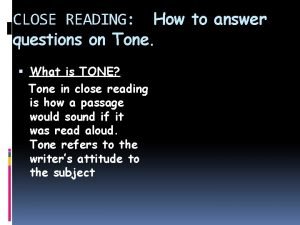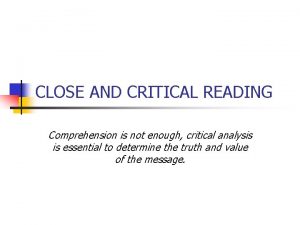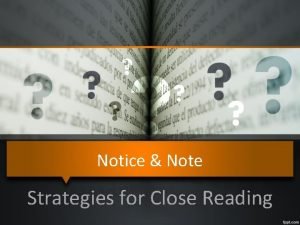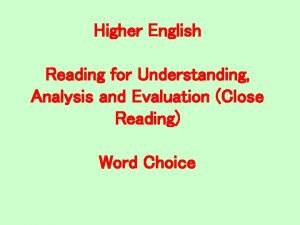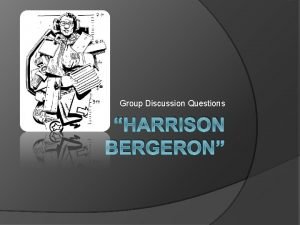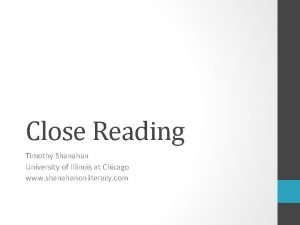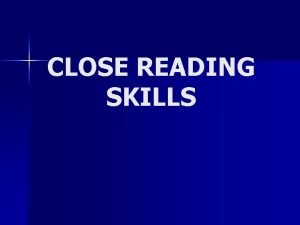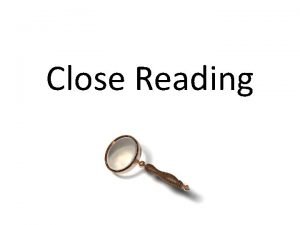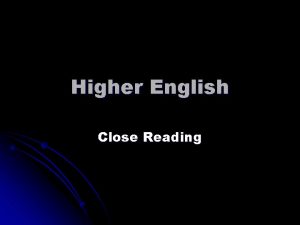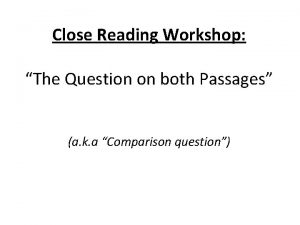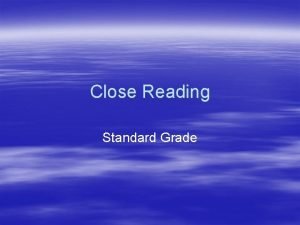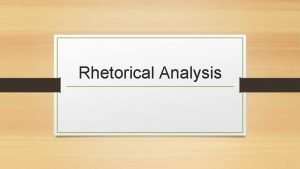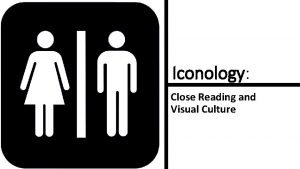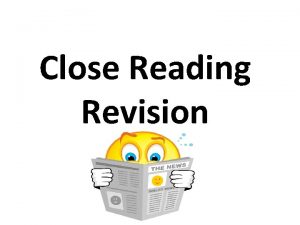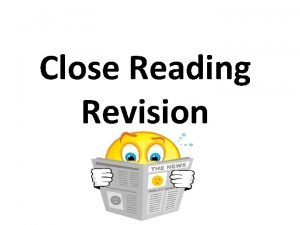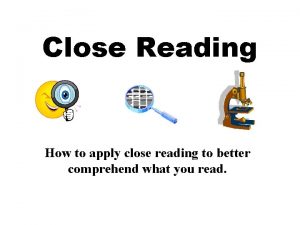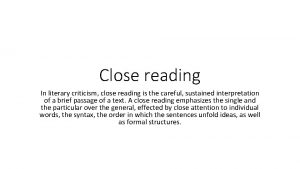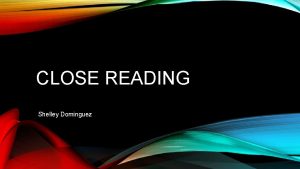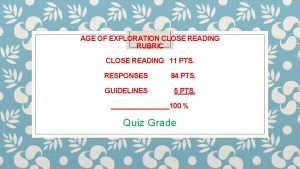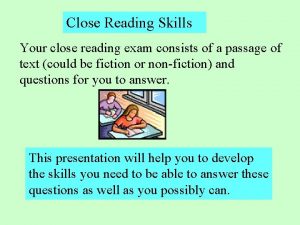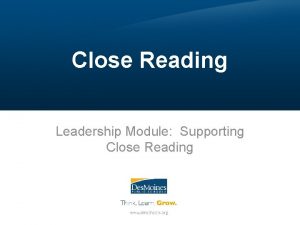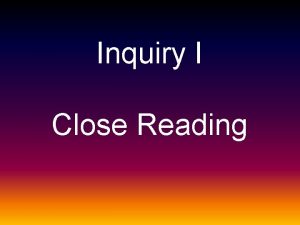Rhetorical Analysis Rhetorical Analysis is A close reading
























- Slides: 24

Rhetorical Analysis

Rhetorical Analysis is…. • A close reading of the text to find out how and whether it works to persuade. • Writing that separates the content (what the passage is about) from the methods (rhetorical strategies) used to successfully convey that content.

What are Rhetorical Strategies? • The effective use of words to persuade or influence. • Includes ethos, logos and pathos. • Includes tone, diction, details, imagery, figurative language, humor, syntax, etc, etc. • Anything used to deliberately create effect.

Composing the analysis • Analyze how well the components of the argument work together to persuade or move the audience • Focus the analysis on the elements that stand out or make the piece intriguing or problematic

Element #1: Purpose • What does the author hope to achieve? • Are the author’s intentions direct or indirect?

Element #2: Audience • Who is the audience for this argument? – Gender – Age – Nationality/culture – Education – Why are they reading this?

Element #3: Appeals • What appeals does the argument use? – Pathos – What specific emotions are evoked in the text? – Ethos – How is credibility built? Does the author seem trustworthy? What authorities does the argument rely on/appeal to? – Logos – What facts, reasoning, and evidence are used? How are they presented?

Element #4: Claims and Context • What claims are made? What issues are raised and what are ignore/evaded? • What is the social context for the argument? Political? Historical? Cultural? – Who is served by the argument, and who stands to gain or lose from it?

Element #5: Organization • Assess the merits of the organization and what may be missing. – Is the presentation straightforward? – Does the author lead you through a chain of claims toward a conclusion? – Does the author use interruptions, such as background, context, and anecdotes, to illustrate or qualify arguments? – What transitions, headings/subheadings, documentation of sources, and visuals are used?

Element #6: Style • The ways ideas are stated • Techniques- blunt sentences, repetition, formal (technical or impersonal) or informal language (colloquialisms, contractions) • Humor or irony, confident or unsure voice, tone, diction, imagery, figurative language • What are the effects of the style? • Why did the author choose to use the style that is used?

Writing an Analysis • Rhetorical Analysis = Why, How, So What • WHY = Are the choices effective and appropriate for the intended audience? • HOW = What techniques does the writer choose to present the material? • SO WHAT = What is accomplished or created? • If you don’t do this, you don’t have analysis!!

How do I Write a Rhetorical Analysis? • Analyze the prompt to determine what kind of analysis and what effect to address. • Understand the passage! • Deal with “hidden” questions, such as: What IS the effect? Answer these in the first body paragraph. • Given the time, select three techniques to discuss. Keep in mind the type of essay presented by the passage and look for typical techniques for that rhetorical mode.

• Compose a thesis that states BOTH the effect AND the techniques. • Be sure to avoid the trap of explaining meaning; no AP essay question will ask you what a passage means. • Focus on HOW a technique creates the given effect. • Rule of thumb: more than HALF your essay should be commentary.

The Essay • Like any other essay, the rhetorical analysis will have – Introduction – Body paragraphs – Conclusion

Introduction DETAILING THE RHETORICAL SITUATION • How would you describe the rhetorical situation? What will you say about the writer, the subject, the context, the audience, and the principal aim/purpose of the text? • How would you summarize the essay in one or two sentences? (Try not to digress into a lengthy paraphrase of the piece. ) What is the writer's thesis? • What features of substance and style will you focus on in the body of your essay, and why do you consider them so important to the discourse? (This is your thesis. )

How do I Write a Thesis for a Rhetorical Analysis? • The author’s name • plus an adjective (sophisticated, carefully crafted, flashy, inventive) • plus the rhetoric strategies (three specific rhetorical strategies used as topics of body paragraphs) • plus a strong verb (demonstrates, creates, emphasizes, generates, fulfills) • plus the function (what the rhetoric does for the piece) Example: Douglass’s sophisticated use of diction, imagery and figurative language creates his unfavorable attitude towards slavery.

Body Paragraphs (by no means should you attempt to discuss all of these elements; these are simply suggestions of strategies you could discuss) DISCUSSING THE CONTENT OF THE TEXT: • How does the writer develop the discourse, and why has she chosen these methods of development? • How has the writer arranged the discourse, and why has she chosen this pattern of arrangement over others? (Make specific reference to the introduction, thesis, the body, and the conclusion if you think it is important. )

Body Paragraphs (cont. ) • If the essay is persuasive, which of the persuasive appeals (logos, ethos, or pathos) predominates, and how do these appeals strengthen or weaken the argument? • Are there any fallacies or other weaknesses in the argument? How do they affect the reader’s response to the work? What kinds of assumptions are at work here? Are they fair assumptions? What are the particular strengths of the argument? How does the writer establish common ground? • Does the writer make effective use of concession, refutation, and/or counter-argument?

Developing the analysis • How does the example help the author achieve the purpose of the piece? • What is the significance of the example? • Why did the author include this or do this? • What is the primary function of the strategy? For instance, what purpose does a dash normally serve? Why then, would the author include a dash?

Body Paragraphs DISCUSSING THE STYLE OF THE TEXT • Which of the following features of style do you consider most important to the discourse and why? – language (including level of diction and tone of voice) – figurative language, symbolism, allusion (biblical, historical etc. ), irony – humor – number and length of paragraphs – length and style of sentences – rhythm and repetition – See previous list of strategies • How do these particular features of style enable the writer to achieve her/his purpose?

Use the SAME FORMULA to create your analysis… Diction: • Author’s name • plus adjective • plus the term “diction” • plus a strong verb • plus the function • plus examples from text. Example: Andrist’s humorous diction recreates the dynamic personality of General Custer with choices such as “flamboyant” and “teetotaler”.

Tone: • Author’s name • plus an adjective (informal, light, impartial, simple) • plus the term “tone” • plus strong verb • plus the function • plus examples. Syntax: • Author’s name • plus an adjective (short, simple, varied, repetitive, balanced) • plus the term “syntax” • plus the function • plus examples.

Conclusion • Use your conclusion to comment on the effect and effectiveness of the essay as a whole. How well does the writer achieve the purpose, appeal to the audience, and demonstrate the effect of style on content?

Note the following conventions of analysis: • Analyze a text in the simple present tense • Enclose essay titles inside quotation marks • Refer to "the reader" or "the audience" only when necessary (or not at all). • Support your claims with textual evidence (direct quotations and paraphrases) • Avoid empty descriptors: enlightening, excellent, etc. – Just placing an empty descriptor in front of the point you want to make does not make your point.
 The santa ana winds joan didion annotation
The santa ana winds joan didion annotation Pre reading while reading and post reading activities
Pre reading while reading and post reading activities Close and critical reading
Close and critical reading Close reading annotation symbols
Close reading annotation symbols What is sourcing in history
What is sourcing in history Sign posts reading
Sign posts reading National 5 close reading
National 5 close reading What is the climax in a sound of thunder
What is the climax in a sound of thunder Sourcing corroboration contextualization
Sourcing corroboration contextualization Close reading in de praktijk
Close reading in de praktijk How to answer close reading questions
How to answer close reading questions Close reading definition
Close reading definition Tongue-in-cheek examples
Tongue-in-cheek examples Close reading objectives
Close reading objectives Close and critical reading
Close and critical reading Close reading a poem
Close reading a poem Notice and note close reading
Notice and note close reading How to answer word choice questions higher english
How to answer word choice questions higher english Higher close reading
Higher close reading Reading questions for harrison bergeron
Reading questions for harrison bergeron Timothy shanahan close reading
Timothy shanahan close reading Close reading introduction example
Close reading introduction example Close reading protocols
Close reading protocols Higher english close reading
Higher english close reading Identify a key term used in both passages.
Identify a key term used in both passages.
